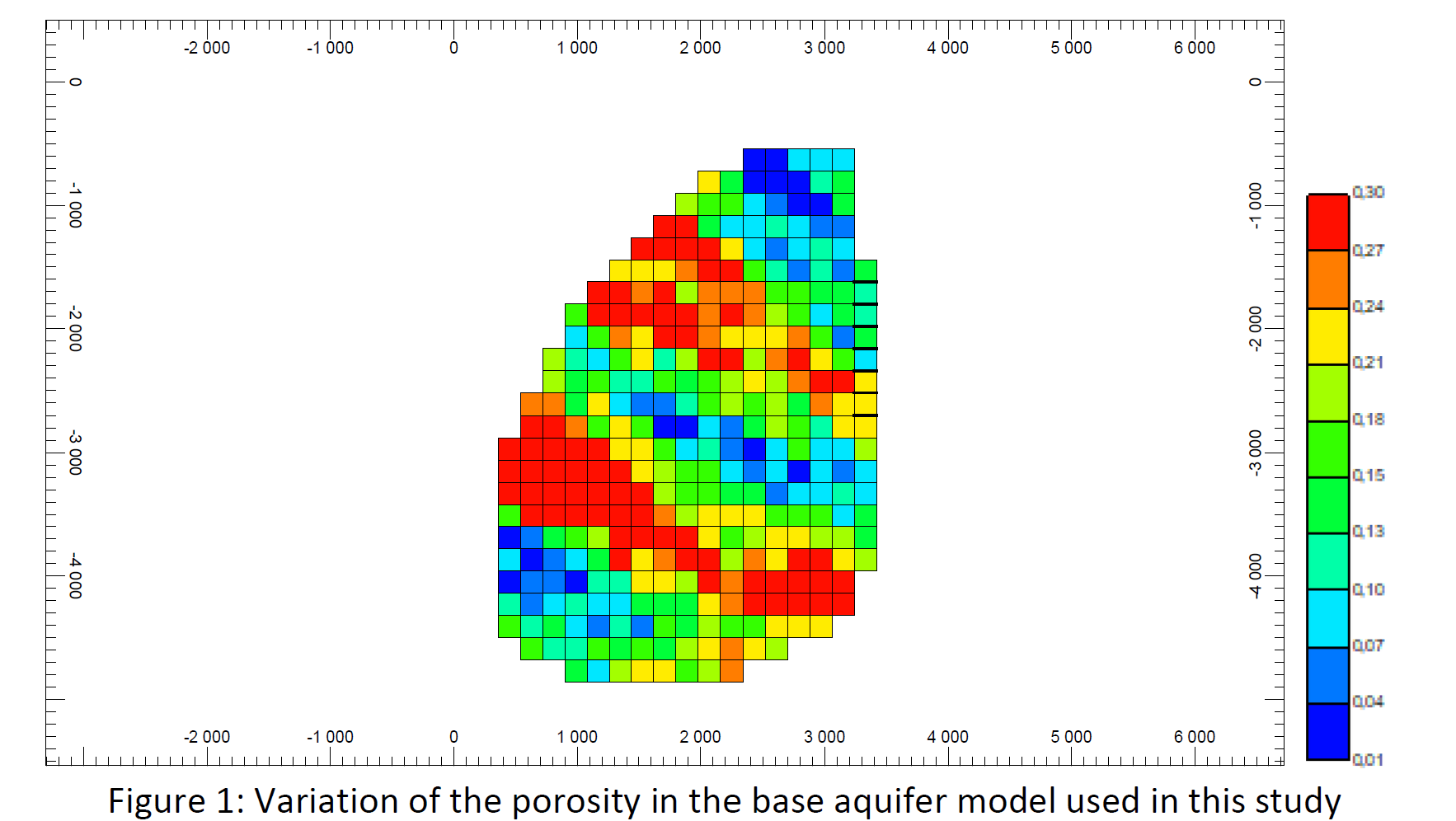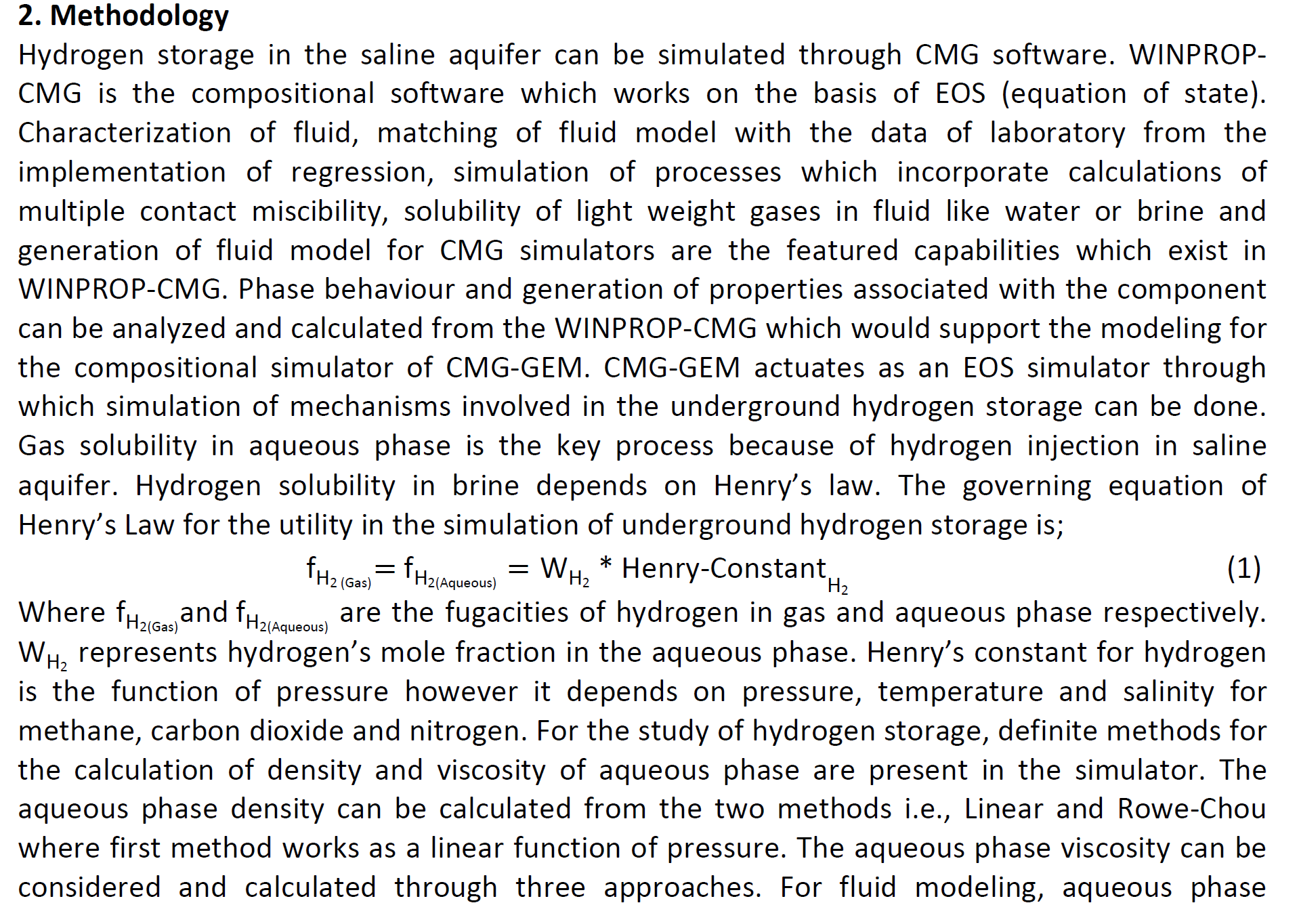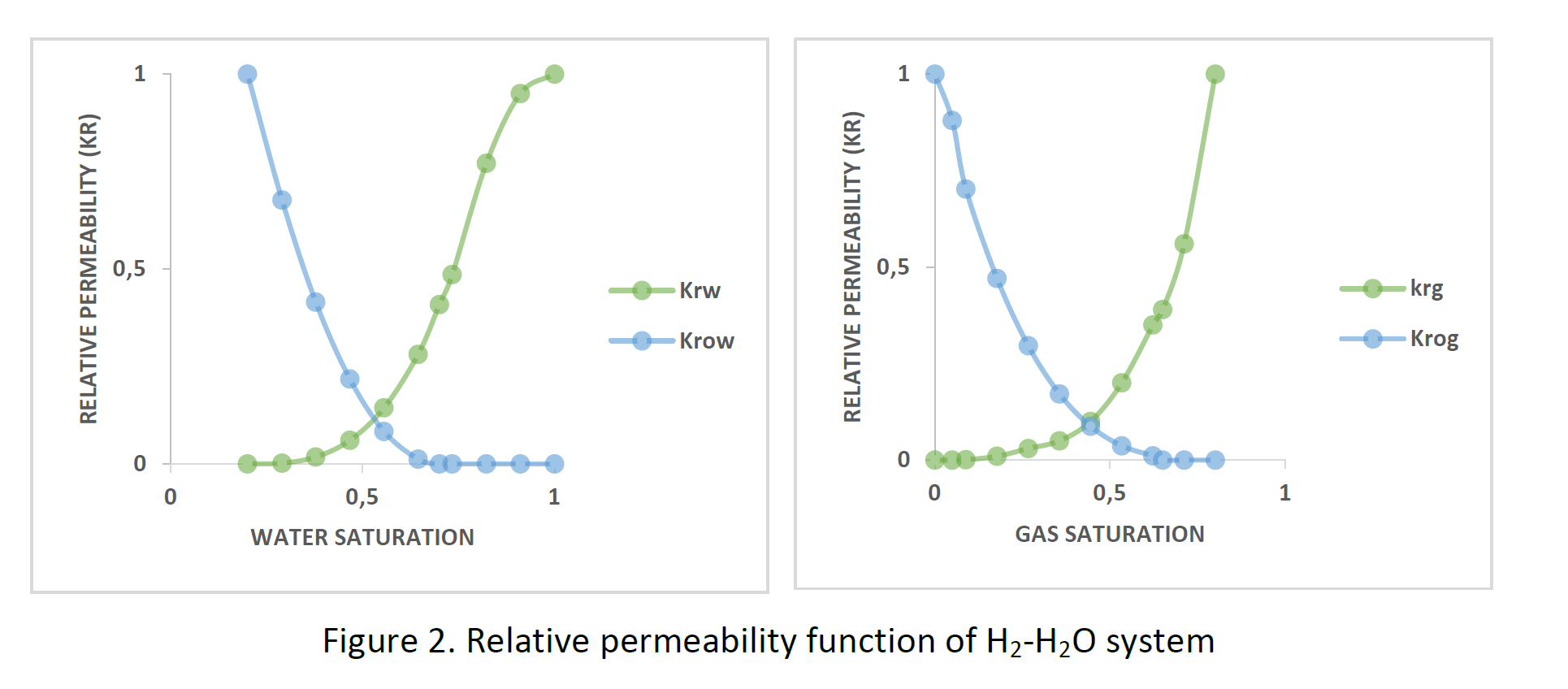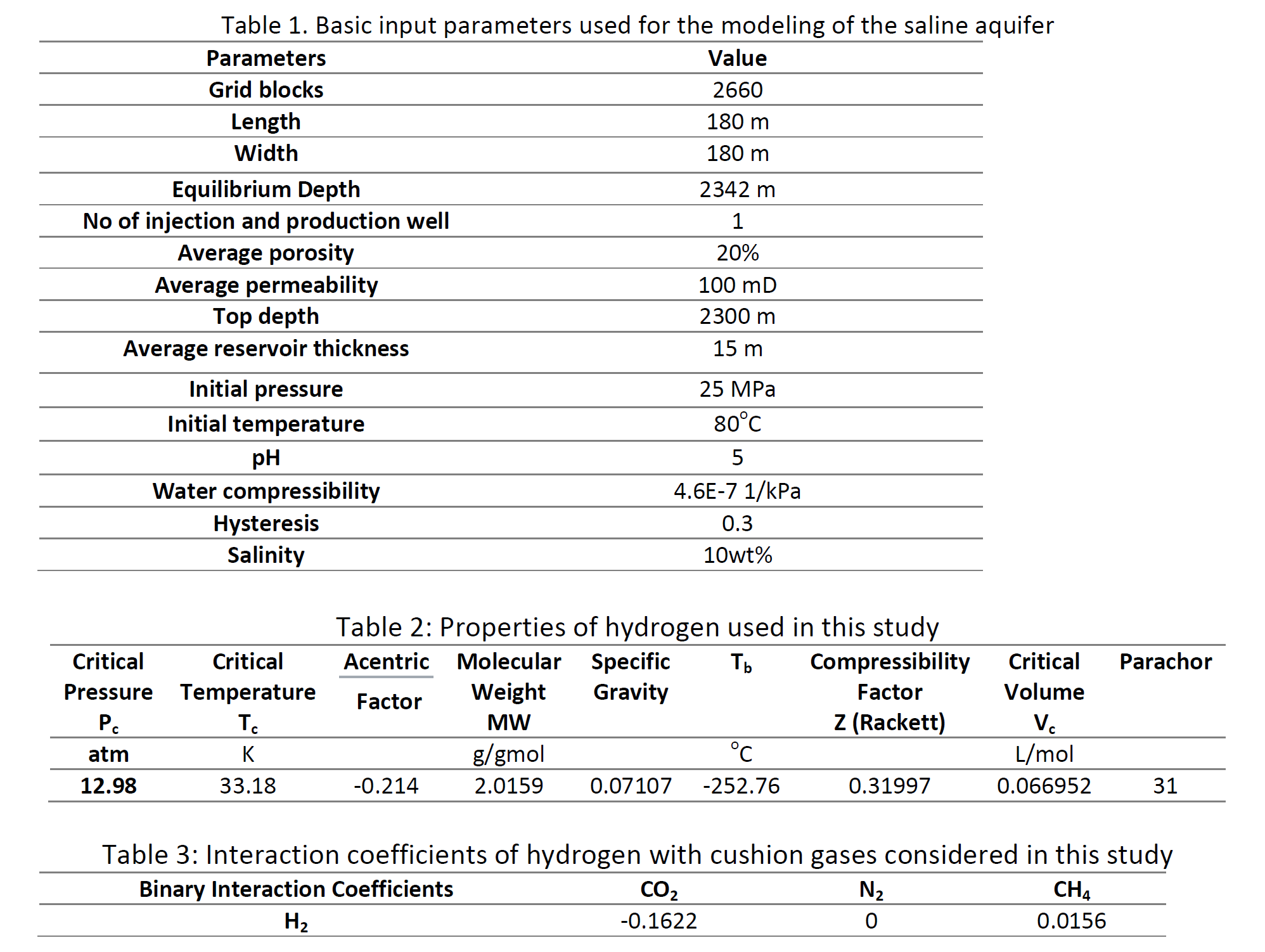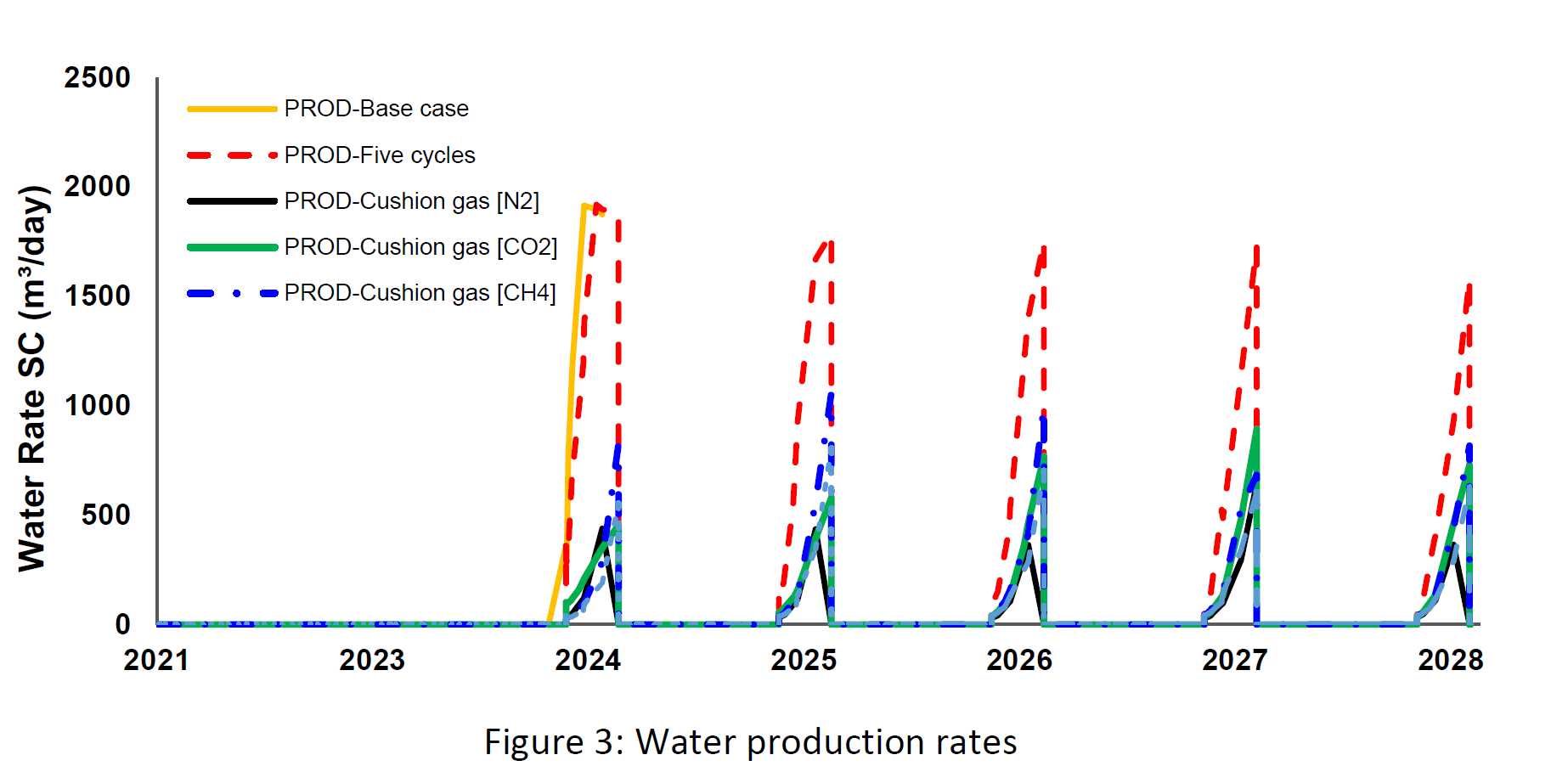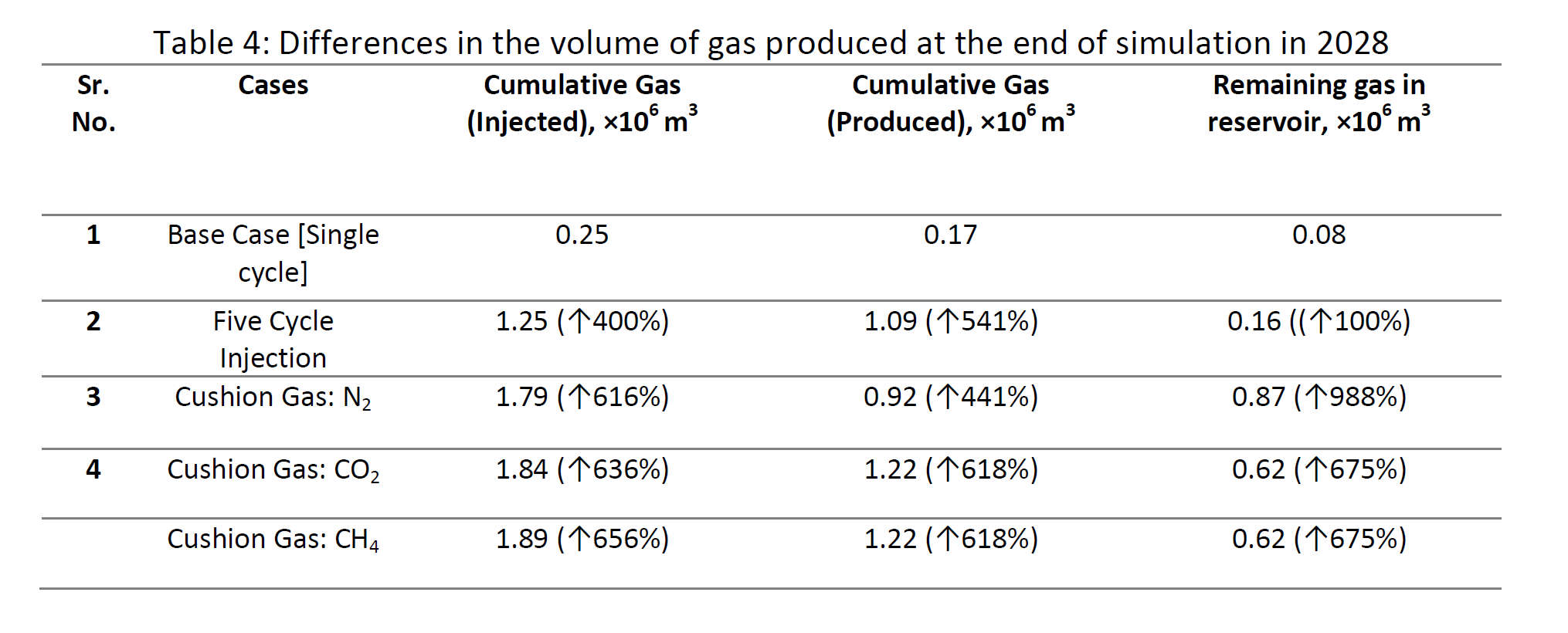氢气作为一种主要的能源载体,在重工业脱碳中发挥着重要作用。考虑到含水层在不同地质环境中的储存能力和可用性,含水层地下储氢是一个很好的选择,但可能会受多种操作、地质和地球化学等复杂因素影响。本文试图评估垫气(氮气、甲烷和二氧化碳)对含水层储氢成功的影响。含水层储氢可以通过CMG软件进行模拟,表征氢气储存的相关机理。WINPROP是CMG的一款基于EOS(状态方程)的相态模拟软件。实际储层模型模拟结果表明,注入二氧化碳和甲烷在水驱替量、累积注入和产出量等方面都优于注氮气。考虑到某些操作和经济因素,与垫气方案相比,周期注采方案地层残留气量和累积气量效果更好。
Hydrogen Storage in Saline Aquifers — On the Efficiency of CH4, CO2 and N2 as a Cushion Gas?
Abstract
Hydrogen as a major energy vector plays an important role in the decarbonization of heavy industry. However, intermittency and sessional availability of renewable energy sources, as well as the demand for energy at different times and places, require a medium- to long-term storage technology. Underground hydrogen storage in saline aquifers could be a good option given the storage capacity and availability of aquifers in different geological settings. However, saline aquifers may suffer from many operational, geological, and geochemical complications. In this paper, we attempted to evaluate the need of cushion gas (nitrogen, methane, and carbon dioxide) on the success of hydrogen storage in saline aquifers.
Hydrogen storage in the saline aquifer can be simulated through CMG software. There are relevant features which are present in the simulator for the hydrogen storage. WINPROP-CMG is the compositional software which works on the basis of EOS (equation of state). The results obtained from simulating a realistic reservoir model indicated that that carbon dioxide and methane injection both were outperformed than nitrogen in terms of water displacement, cumulative injection and production. Considering the certain operational and economic aspects, injection and production cyclic mode provided the acceptable remaining gas volume and cumulative gas compared to the cushion gas scenarios, therefore, cyclic gas injection would be a promising approach to overcome the gas contamination issue. Keywords: Hydrogen, geological storage, aquifers, cushion gas, cyclic injection.
